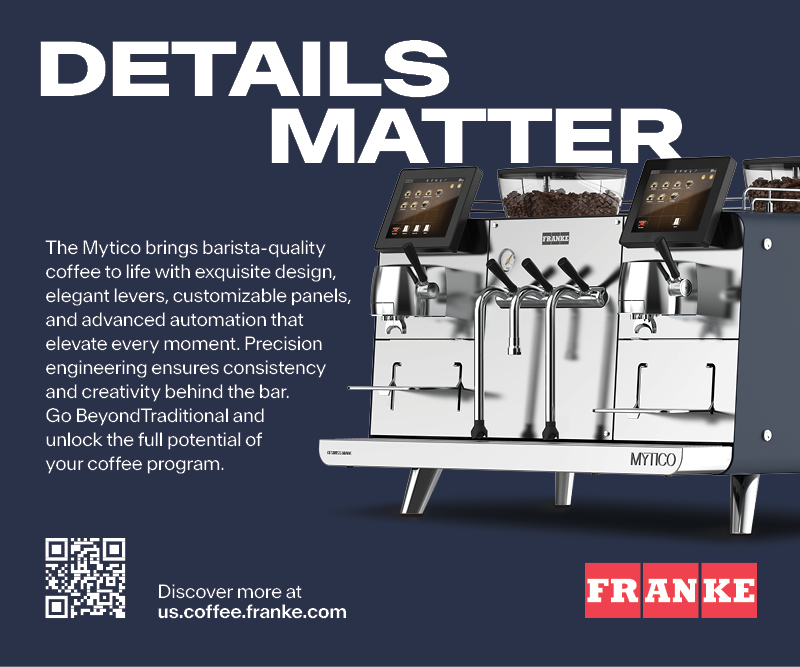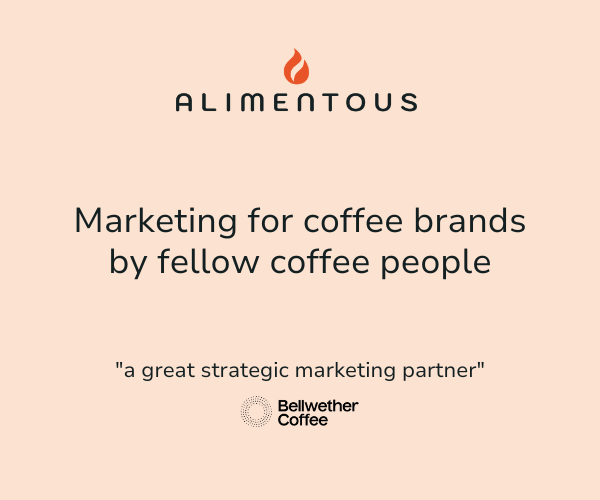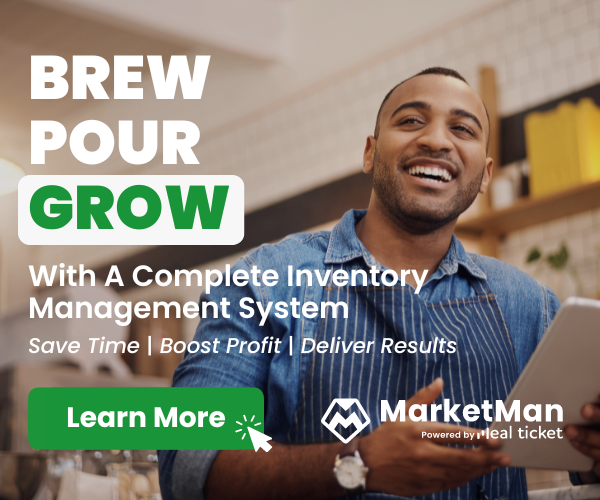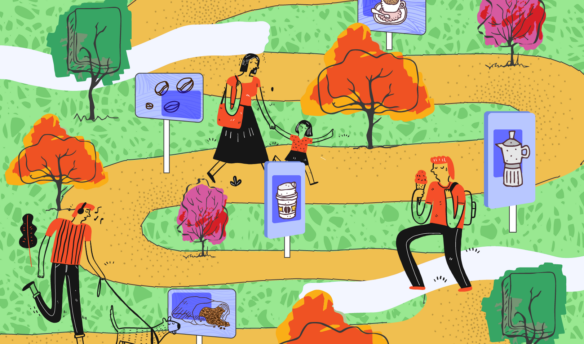Most cafes work the same way: Customers wait in line, order at the register, then step aside while their drinks are made. At The Coffee Movement in San Francisco, however, the entire sequence is flipped. Customers are greeted at the espresso bar, where a barista takes their order and starts their drink before they even pull out their wallets. From there, the order moves through four stations: espresso, milk, finishing, and payment.
“You’re only waiting in line, not waiting to get your drink,” says Meg Skop, the cafe’s general manager. Each guest sees their drink being made as they follow its path through the bar. If everything goes right, “when someone comes up to the register and they’re about to tap their card, I’m also handing out your drink at the exact same time,” Skop says.
Seeing a line out the door of a cafe might indicate success. But it can just as easily lead to confusion, stressed-out staff, or a dip in quality. Speed helps, yet it’s structure that holds everything together. Even a short wait can drag without a clear workflow. With a strong system in place, the wait can feel more like part of service than something to endure.
Leading With Hospitality
In busy cafes, the wait itself isn’t always the issue. What matters is whether customers feel confident moving through the system, especially if a cafe is set up to provide service and drinks in a way they’re not used to.
The Coffee Movement stays busy, especially on weekends, when the line often stretches to the door. For first-timers, it can be confusing to walk in and see a bar instead of a register, but the team is trained to meet that moment with hospitality. “A lot of people who come in have never seen [our system],” Skop says.
That moment starts with language that puts customers at ease. Staff are trained to explain the process simply and confidently, so guests understand what to expect without feeling talked down to. It’s a small shift, but one that sets the tone for the entire interaction. Especially in a tight space—like the cafe’s Chinatown location, where the bar wraps into a corner—it’s easy for people to feel unsure of where to go next. That’s where tone and confidence matter most. “You don’t have to know where to go,” Skop says. “I’m here to lead you through this experience.”
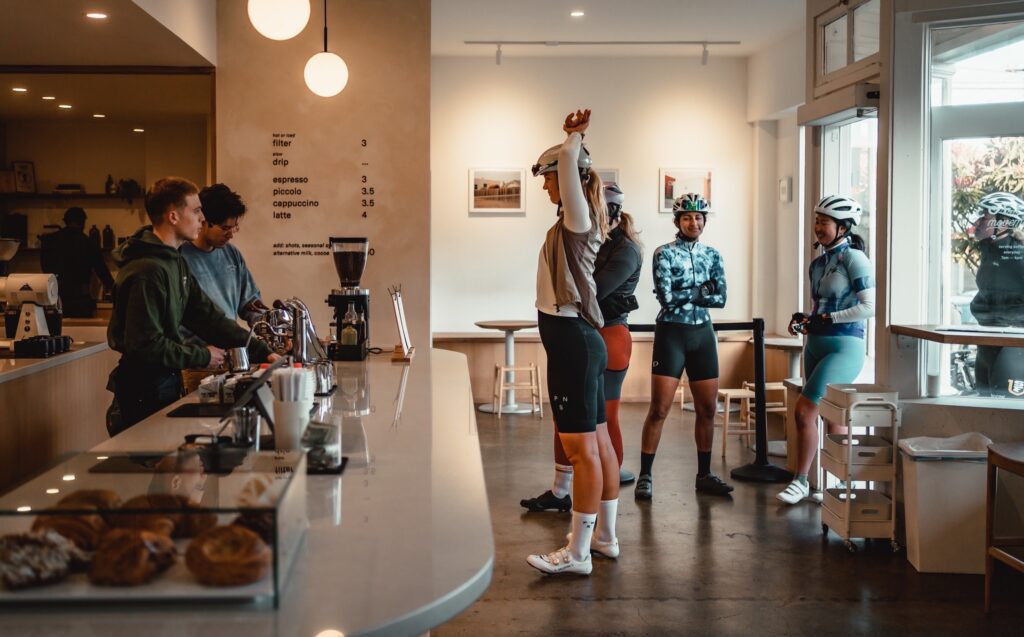
At Blueprint Coffee, an independent chain of coffee shops in St. Louis, clarity and presence matter just as much. Retail general manager Kevin Reddy says a long line can either feel exciting or chaotic, but what makes the difference is how it’s handled. From day one, he trains staff to resist the urge to rush orders just to reduce the wait. “There’s often a desire to just burn through those tickets,” he says. “I’d much rather you wait in line than wait for your order.”
At both of Blueprint’s cafes, the line design prioritizes hospitality over speed. By limiting tickets, baristas can stay composed even during busy stretches. “And when that balance is in place, the line becomes part of the appeal. “It attracts people to the place so long as the team that’s working is demonstrating comfort and competency—and kindness and patience,” Reddy says. “While you’re waiting in line, you’re excited for that opportunity to have that experience, as opposed to seeing a bunch of frantic people running around.”
“A long line is really like the best billboard we can have,” he adds. As long as things are running well behind the bar, it sends a message that the wait is worth it.
At The Coffee Movement, weekends can get hectic, but that hasn’t kept regulars away. “A lot of our regulars still stand in line during the weekends,” Skop says. For many, the weekend crowd is just part of the ritual.
Making Busy Sustainable
Busy days are expected at high-volume cafes. The challenge isn’t avoiding the rush, but creating systems that help the team move through it without burning out.
At The Coffee Movement, baristas rotate through the cafe’s four stations in cycles. No one stays in one role for more than two hours, and breaks are built into the schedule. The goal is to keep people fresh and avoid long, repetitive shifts that wear workers down.
“We’ve all worked somewhere where you were the one manning the espresso bar for eight hours,” Skop says. “We try to rotate bar work.”
At Blueprint Coffee, the owners shortened their operating hours to match peak demand. By focusing on an 8 a.m. to 4 p.m. window, they avoid slow stretches and keep the floor consistently staffed during the busiest parts of the day. They’ve also invested in long-term sustainability through labor practices: Blueprint gives employees four-day weeks, paid time off, and benefits that encourage workers to stay. Reddy says that consistency shows up in the energy behind the bar, and in the way customers are treated, even during a rush.
“We’ve created a space where people can see themselves growing,” Reddy says. “And that translates into competency and rapport with the customer.”
That sense of calm and cohesion in a coffee shop can help guests feel at ease and lift pressure off the team. Skop sees that at her shop, too: “We’re all talking, the music is fun. You stop thinking about the line, and you can just be in the moment.”
Planning for the Rush
A smooth service during peak hours doesn’t happen by chance. It’s the result of in-depth prep, and a shared understanding among staff of what needs to happen and in what order. That way, the team is already in sync as the line starts to build.
That planning starts with routine, says Skop. “Running a successful high-volume day is just as much planning as possible, and excitement.” Every day includes a cafe reset at 9:30, structured breaks, and a clear timeline for lunch coverage. Tasks like making syrups for lattes or deep cleaning don’t happen in the middle of a rush. The goal is to avoid surprises, keep energy steady, and make sure things are stocked and ready so workers don’t have to scramble for the tools they need.
Skop says those lessons came from an earlier barista job at a 24-hour cafe. “When I worked in North Carolina, we never closed,” she explains. “That’s where I learned you always want to make sure your milk is stocked. You always want to make sure you don’t have to do production in the middle of the day.”
It’s about removing friction, not just for customers, but for the team. “I like planning so that nobody is worried,” she says. “That helps you get through the day so that it’s just a normal day instead of, ‘I’m going home and I feel like I worked so insanely hard and I need to crash.’”
When volume is steady, it’s easier to build reliable schedules. Staff get the hours they expect, and for some, that consistency is what makes them eligible for health insurance. “It’s a good thing to be busy,” Skop says. “That means my employees get more hours. That means people get their insurance.”
Planning shows up in the form of prep and calibration at Blueprint. Before opening, baristas dial in recipes and fine-tune everything from batch brew settings to milk frothing routines. Coffee is pre-portioned, and anything that can be prepped ahead of time is handled in advance. “We pre-make everything we can so that when the customer does walk in, we’re set up to be as efficient as we possibly can without sacrificing that quality,” Reddy says.
Blueprint, co-founded by Reddy and a collective of coffee professionals, takes a measured approach to growth. As the team has opened new locations, they’ve also adapted their workflows to fit different foot traffic patterns—batch brewing in some shops and pour-overs in others—so every space is designed to support high volume without cutting corners.
A long line can frustrate customers or draw them in. What tips it one way or the other often comes down to how the line is managed. When the system works, and the team feels confident, the wait becomes part of the experience.
None of that happens by accident. It takes intention, repetition, and a team that knows how to work together when it counts. Customers are watching, but the real test is behind the bar. “It’s up to us to create an opportunity for the team to succeed,” Reddy says.




